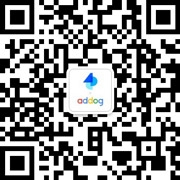
本案例默认翻译为中文,点击可切换回原语言
已切换成原语言,点击可翻译成中文
伪装的听力测试
案例简介:活动描述 基于听力损失的人被否认的洞察力,我们开发了一种在他们不知道的情况下测试他们听力的方法。爱会永远持续下去吗? 是一部有两个不同结局的短片,取决于观众的听力。这是伪装的听力测试。这部电影讲述了一对夫妇四十多年的关系,并提出了一个问题: “爱情持续了吗? “对于那些听得好的人来说,他们的关系仍然是充满爱的。但是这部电影是以这样一种方式编写和制作的,以至于听力有问题的人认为这种关系会恶化。这种想法的美妙之处在于,听力损失患者在屏幕上的关系明显恶化,以及他们在自己的生活中可能经历的日益严重的脱节, 由于听力损失。这个微妙的提醒展示了他们可能拒绝承认的情况的影响。 结果 我们扭转了听力测试的局面,扰乱了观众的矛盾心理,激励他们采取行动。前 9 周的结果:-在前 9 周测试了 90,000 名澳大利亚人的听力-通常可能没有测试的人-导致 6,000 接受进一步的听力评估-103, 微网站的访问者数千人,跳出率只有 3% -- 平均页面时间为 14 分钟,展示高参与度 -- 为那些有听力问题的人提供了一个平台,与耳蜗连接,进行免费咨询,开始他们重新发现听力的漫长道路。这实现了我们的主要商业目标,即用 437 个高度投入、高价值的线索填充耳蜗的销售漏斗。这场运动的回报率是 25:1 战略 直接面向消费者: 耳蜗传统上专注于与听力专业人员和听力学家沟通,寻求推荐而不是请求。然而,由于消费者没有积极拜访听力专业人士,听力专业人士在品牌选择方面的影响力越来越小,我们需要做出大胆的战略飞跃,直接接触消费者。打破否认: 85% 的听力损失患者否认他们的症状。考虑到这种行为障碍,很明显,我们不能仅仅告诉人们他们有问题,我们必须证明这一点。数据涵盖所有方面: 患者数据和研究揭示了应对机制 (例如避免繁忙的餐馆,调高电视音量) 以及听力损失患者发现困难的声音和环境(例如背景噪音,带有辅音的单词,如 T,S,嘈杂的餐馆)。这些来自数据的见解被运用到生产的各个方面。 概要 澳大利亚正处于无声的流行病之中。350万的人患有某种形式的听力损失,然而 85% 的人对此一无所知。作为植入式听力解决方案的全球领导者,耳蜗最大的竞争对手不是竞争品牌 -- 而是潜在客户的不作为。许多人否认; 其他人只是把它视为 “变老” 的一部分。未经治疗的患者将自己与社会状况隔离开来,失去与亲人的联系,并面临患抑郁症的可能性增加。正是在这种背景下,耳蜗决定推出他们的第一个面向消费者的主要活动,旨在:-提高对听力损失患病率的认识,并让国家谈论它-鼓励那些否认的人采取行动-将患者与耳蜗联系起来进行咨询, 提供平台开始他们的道路,重新发现他们的听力。 执行 剧本、方向和声音设计都经过精心策划,根据观众的听觉能力创造了两个不同的结局。我们与听力学家合作分析患者的听力图,开发了听力档案,显示在不同程度的听力损失中,什么会被发现,什么不会被发现。我们利用这些知识开发了一个脚本,该脚本被认为是所有级别的听力损失 (轻度、中度和重度),绘制出哪些单词更难听。表演被编排成负面的解释,唇读的能力被剥夺了。选择背景噪音较高的场景,听力损失者发现这很困难。这部电影是评估用户听力能力、标记潜在问题并引导他们恢复的复杂数字旅程的开始。用户被带到我们的网站进行进一步的听力评估,量化他们的听力能力。
伪装的听力测试
案例简介:CampaignDescription Based on the insight that people with hearing loss are in denial, we developed a way to test their hearing, without them knowing.‘Does Love Last Forever?’ is a short film with two different endings, depending on the viewer’s hearing ability. It’s a hearing test in disguise.The film follows a couple’s relationship over four decades, and poses the question “Did love last?” For those who can hear well, their relationship remains loving. But the film is scripted and produced in such a way that people with a hearing problem perceive the relationship to deteriorate. The beauty of the idea lies in the parallel between the perceived deterioration of the on-screen relationship by hearing loss sufferers, and the growing disconnect they may be experiencing in their own life, due to hearing loss. This subtle reminder demonstrates the effects of a condition that they may have refused to admit. Outcome We turned the hearing test on its head, disrupting the ambivalence of our audience and inspiring them to action. Results in the first 9 weeks:-Tested over 90,000 Australian’s hearing in the first 9 weeks – people who normally may have not been tested-Leading to 6,000 taking a further hearing assessment-103,000 visitors to the microsite, with a bounce rate of only 3%-Average time on page is 14 minutes, demonstrating high engagement-Provided a platform for those with a hearing issue to connect with Cochlear for a free consultation to commence their long path to rediscovering their hearing. This fulfilled our key commercial objective of filling Cochlear’s sales funnel with 437 highly engaged, high value leads. -The campaign has resulted in a Return Ratio of 25:1 Strategy Direct to consumer:Cochlear had traditionally focused their efforts on communicating to hearing professionals and audiologists, seeking recommendation as opposed to request. However, as consumers are not actively visiting hearing professionals and hearing professionals are becoming less influential in brand choice, we needed to make a bold strategic leap and go directly to the consumer. Disrupt the denial:85% of hearing loss sufferers were denying their symptoms. Considering this behavioural barrier, it was clear that we couldn’t just tell people they had a problem, we had to demonstrate it.Data informed all aspects:Patient data and research revealed the coping mechanisms (eg avoiding busy restaurants, turning up the TV volume) and the sounds and environments people with hearing loss find difficult (eg background noises, words with consonants such as T, S, noisy restaurants). These insights from the data were worked into every aspect of the production. Synopsis Australia is in the midst of a silent epidemic. 3.5 million people are living with some form of hearing loss, however 85% do nothing about it. As the global leader in implantable hearing solutions, Cochlear’s biggest competitor is not a rival brand – it is the inaction of their potential customers. Many are in denial; others simply dismiss it as part of ‘growing old’. Untreated sufferers isolate themselves from social situations, losing connection with loved ones and face an increased likelihood of developing depression.It is against this backdrop that Cochlear decided to launch their first major consumer facing campaign, aiming to: -Raise awareness of the prevalence of hearing loss and get the nation talking about it-Encourage action amongst those who are in denial-Connect sufferers with Cochlear for a consultation, providing the platform to begin their path to rediscovering their hearing. Execution Script, direction and sound design were all carefully orchestrated to create two different endings, depending on the viewer’s hearing ability. Working with audiologists to analyse patient audiograms, we developed hearing profiles that showed what would or wouldn’t be picked up at varying levels of hearing loss. We used this knowledge to develop a script that was considered across all levels of hearing loss (mild, medium and severe), mapping out which words would be harder to hear. Performances were choreographed to be interpreted negatively and the ability to lip read was taken away. Scenes with higher instances of background noise were selected, which people with hearing loss find difficult. The film was the beginning of a complex digital journey to evaluate the hearing ability of users, flag potential issues and lead them to recovery. Users were driven to our site to take a further hearing assessment, quantifying their hearing ability.
The Hearing Test in Disguise
案例简介:活动描述 基于听力损失的人被否认的洞察力,我们开发了一种在他们不知道的情况下测试他们听力的方法。爱会永远持续下去吗? 是一部有两个不同结局的短片,取决于观众的听力。这是伪装的听力测试。这部电影讲述了一对夫妇四十多年的关系,并提出了一个问题: “爱情持续了吗? “对于那些听得好的人来说,他们的关系仍然是充满爱的。但是这部电影是以这样一种方式编写和制作的,以至于听力有问题的人认为这种关系会恶化。这种想法的美妙之处在于,听力损失患者在屏幕上的关系明显恶化,以及他们在自己的生活中可能经历的日益严重的脱节, 由于听力损失。这个微妙的提醒展示了他们可能拒绝承认的情况的影响。 结果 我们扭转了听力测试的局面,扰乱了观众的矛盾心理,激励他们采取行动。前 9 周的结果:-在前 9 周测试了 90,000 名澳大利亚人的听力-通常可能没有测试的人-导致 6,000 接受进一步的听力评估-103, 微网站的访问者数千人,跳出率只有 3% -- 平均页面时间为 14 分钟,展示高参与度 -- 为那些有听力问题的人提供了一个平台,与耳蜗连接,进行免费咨询,开始他们重新发现听力的漫长道路。这实现了我们的主要商业目标,即用 437 个高度投入、高价值的线索填充耳蜗的销售漏斗。这场运动的回报率是 25:1 战略 直接面向消费者: 耳蜗传统上专注于与听力专业人员和听力学家沟通,寻求推荐而不是请求。然而,由于消费者没有积极拜访听力专业人士,听力专业人士在品牌选择方面的影响力越来越小,我们需要做出大胆的战略飞跃,直接接触消费者。打破否认: 85% 的听力损失患者否认他们的症状。考虑到这种行为障碍,很明显,我们不能仅仅告诉人们他们有问题,我们必须证明这一点。数据涵盖所有方面: 患者数据和研究揭示了应对机制 (例如避免繁忙的餐馆,调高电视音量) 以及听力损失患者发现困难的声音和环境(例如背景噪音,带有辅音的单词,如 T,S,嘈杂的餐馆)。这些来自数据的见解被运用到生产的各个方面。 概要 澳大利亚正处于无声的流行病之中。350万的人患有某种形式的听力损失,然而 85% 的人对此一无所知。作为植入式听力解决方案的全球领导者,耳蜗最大的竞争对手不是竞争品牌 -- 而是潜在客户的不作为。许多人否认; 其他人只是把它视为 “变老” 的一部分。未经治疗的患者将自己与社会状况隔离开来,失去与亲人的联系,并面临患抑郁症的可能性增加。正是在这种背景下,耳蜗决定推出他们的第一个面向消费者的主要活动,旨在:-提高对听力损失患病率的认识,并让国家谈论它-鼓励那些否认的人采取行动-将患者与耳蜗联系起来进行咨询, 提供平台开始他们的道路,重新发现他们的听力。 执行 剧本、方向和声音设计都经过精心策划,根据观众的听觉能力创造了两个不同的结局。我们与听力学家合作分析患者的听力图,开发了听力档案,显示在不同程度的听力损失中,什么会被发现,什么不会被发现。我们利用这些知识开发了一个脚本,该脚本被认为是所有级别的听力损失 (轻度、中度和重度),绘制出哪些单词更难听。表演被编排成负面的解释,唇读的能力被剥夺了。选择背景噪音较高的场景,听力损失者发现这很困难。这部电影是评估用户听力能力、标记潜在问题并引导他们恢复的复杂数字旅程的开始。用户被带到我们的网站进行进一步的听力评估,量化他们的听力能力。
The Hearing Test in Disguise
案例简介:CampaignDescription Based on the insight that people with hearing loss are in denial, we developed a way to test their hearing, without them knowing.‘Does Love Last Forever?’ is a short film with two different endings, depending on the viewer’s hearing ability. It’s a hearing test in disguise.The film follows a couple’s relationship over four decades, and poses the question “Did love last?” For those who can hear well, their relationship remains loving. But the film is scripted and produced in such a way that people with a hearing problem perceive the relationship to deteriorate. The beauty of the idea lies in the parallel between the perceived deterioration of the on-screen relationship by hearing loss sufferers, and the growing disconnect they may be experiencing in their own life, due to hearing loss. This subtle reminder demonstrates the effects of a condition that they may have refused to admit. Outcome We turned the hearing test on its head, disrupting the ambivalence of our audience and inspiring them to action. Results in the first 9 weeks:-Tested over 90,000 Australian’s hearing in the first 9 weeks – people who normally may have not been tested-Leading to 6,000 taking a further hearing assessment-103,000 visitors to the microsite, with a bounce rate of only 3%-Average time on page is 14 minutes, demonstrating high engagement-Provided a platform for those with a hearing issue to connect with Cochlear for a free consultation to commence their long path to rediscovering their hearing. This fulfilled our key commercial objective of filling Cochlear’s sales funnel with 437 highly engaged, high value leads. -The campaign has resulted in a Return Ratio of 25:1 Strategy Direct to consumer:Cochlear had traditionally focused their efforts on communicating to hearing professionals and audiologists, seeking recommendation as opposed to request. However, as consumers are not actively visiting hearing professionals and hearing professionals are becoming less influential in brand choice, we needed to make a bold strategic leap and go directly to the consumer. Disrupt the denial:85% of hearing loss sufferers were denying their symptoms. Considering this behavioural barrier, it was clear that we couldn’t just tell people they had a problem, we had to demonstrate it.Data informed all aspects:Patient data and research revealed the coping mechanisms (eg avoiding busy restaurants, turning up the TV volume) and the sounds and environments people with hearing loss find difficult (eg background noises, words with consonants such as T, S, noisy restaurants). These insights from the data were worked into every aspect of the production. Synopsis Australia is in the midst of a silent epidemic. 3.5 million people are living with some form of hearing loss, however 85% do nothing about it. As the global leader in implantable hearing solutions, Cochlear’s biggest competitor is not a rival brand – it is the inaction of their potential customers. Many are in denial; others simply dismiss it as part of ‘growing old’. Untreated sufferers isolate themselves from social situations, losing connection with loved ones and face an increased likelihood of developing depression.It is against this backdrop that Cochlear decided to launch their first major consumer facing campaign, aiming to: -Raise awareness of the prevalence of hearing loss and get the nation talking about it-Encourage action amongst those who are in denial-Connect sufferers with Cochlear for a consultation, providing the platform to begin their path to rediscovering their hearing. Execution Script, direction and sound design were all carefully orchestrated to create two different endings, depending on the viewer’s hearing ability. Working with audiologists to analyse patient audiograms, we developed hearing profiles that showed what would or wouldn’t be picked up at varying levels of hearing loss. We used this knowledge to develop a script that was considered across all levels of hearing loss (mild, medium and severe), mapping out which words would be harder to hear. Performances were choreographed to be interpreted negatively and the ability to lip read was taken away. Scenes with higher instances of background noise were selected, which people with hearing loss find difficult. The film was the beginning of a complex digital journey to evaluate the hearing ability of users, flag potential issues and lead them to recovery. Users were driven to our site to take a further hearing assessment, quantifying their hearing ability.
伪装的听力测试
暂无简介
The Hearing Test in Disguise
暂无简介
基本信息
- 广告战役: #Cochlear-网络-71824#
- 广告品牌: Cochlear
- 发布日期: 2000
- 行业领域: 生活服务 , 医疗/护理 , 医药
- 媒体类别: 短视频
- 广告语言: 英语
- 媒介平台: 网络
-
获得奖项:
- Cannes Lions 2018 铜奖 医药类(Disease Awareness & Understanding > Non-Regulated)
- Cannes Lions 2018 入围 医药类(Disease Awareness & Understanding > Non-Regulated)
- Design and Art Direction 2018 木铅笔 公益创意(Advertising & Marketing Communications/Brand)
- The One Show 2018 铜铅笔 健康与医药(Film / Long Form)
- The One Show 2018 优秀奖 直效(Innovation in Direct)
- The One Show 2018 优秀奖 影视(Innovation in Film / Online)
- The One Show 2018 优秀奖 互动(Websites)
- The One Show 2018 优秀奖 用户界面/交互(Web / User Experience)
- Cannes Lions 2017 银奖 网络(Brand/Product Video)
- Cannes Lions 2017 铜奖 网络(Microsite)
- Cannes Lions 2017 入围 数字制作(Music / Sound Design)
- Cannes Lions 2017 入围 直效(Use of Broadcast)
- Cannes Lions 2017 入围 娱乐(Innovation in Branded Content)
暂无评分
已有{{caseInfo.tatolPeople}}人评分
创作者
案例详情
涵盖全球100万精选案例,涉及2800个行业,包含63000个品牌
热门节日97个,23个维度智能搜索
-

项目比稿
品类案例按时间展现,借鉴同品牌策略,比稿提案轻松中标
-

创意策划
任意搜索品牌关键词,脑洞创意策划1秒呈现
-

竞品调研
一键搜索竞品往年广告,一眼掌握对手市场定位
-

行业研究
热词查看洞悉爆点,抢占行业趋势红利
登录后查看全部案例信息
如果您是本案的创作者或参与者 可对信息进行完善







